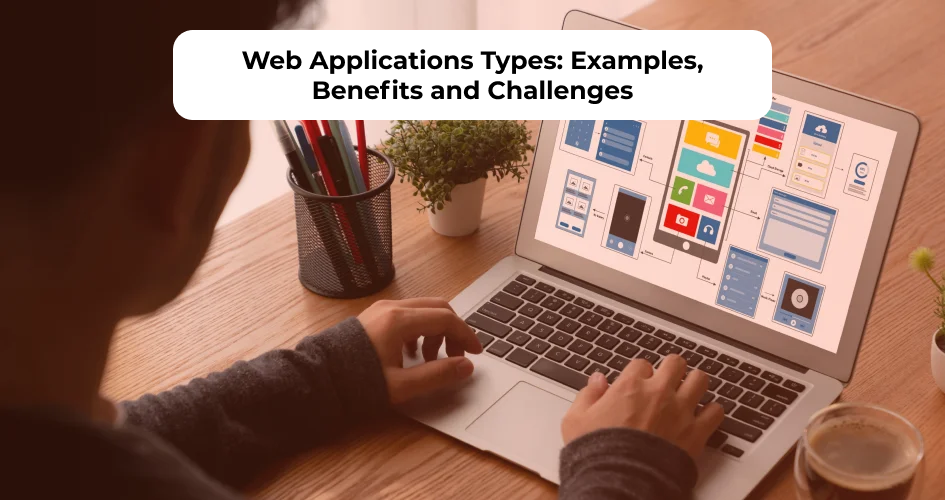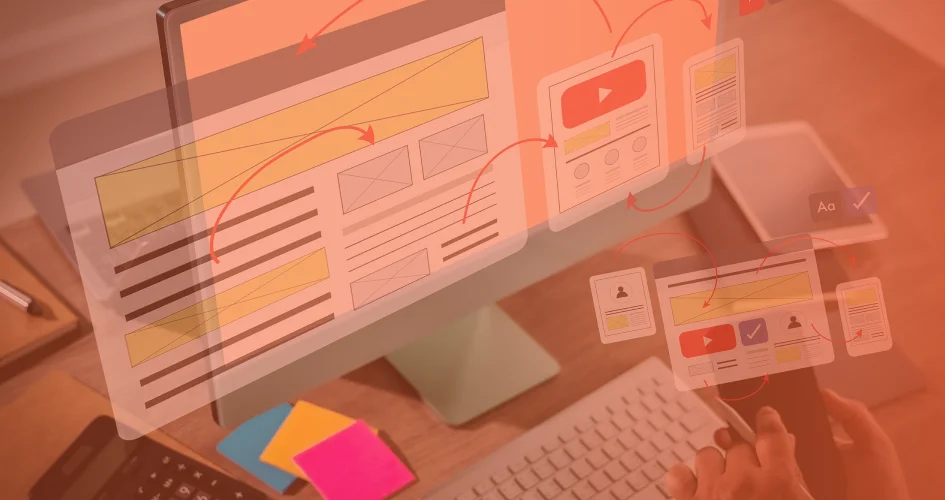Looking to build a lightweight and fast application?
If yes, then Single Page Applications (SPA) may be the perfect fit for you.
But, what exactly is a Single Page Application?
In simpler terms, it is a web application or website that operates within a single web page, dynamically updating its content as the user interacts with it, without needing to reload the entire page.
As a result, you can deliver a smoother and faster experience to visitors.
Single Page Application is the approach behind great services like Gmail, which allows users to check emails and write drafts without switching between different pages.
In this guide, we will dive into what SPAs are, why you might need them for your new website, and how you can build one.
Let’s get started!
What is a Single Page Application?
In web development, a Single Page Application (SPA) is a website or web application that updates its content without reloading the whole page.
Since it eliminates the need for visitors to navigate through many pages, SPAs can greatly improve the user experience.
On a regular website, each time visitors click on something, it triggers a server request to load a new page.
This can take time and disrupt the flow of interaction.
SPAs use client-side rendering, loading only the necessary resources and data as needed.
This approach often leads to faster load times, smoother navigation, and enhanced interactivity.
Since 90% of users have stopped using an app due to poor performance, making the switch to SPAs has become a must rather than an option.
Single Page Applications are made with HTML, CSS, and JavaScript, just like traditional websites and web apps.
So, what separates the two?
The Differences Between Single Page Applications and Multi-Page Apps
| Key Factors | Single-Page Apps | Multi-Page Apps |
| Architecture |
Use client-side rendering and typically consist of a single HTML page that is dynamically updated using JavaScript frameworks like React, Angular, or Vue.js.
Content is loaded on-demand, enhancing performance and user experience. |
Follow a traditional server-side rendering approach where each page request results in the server returning a complete HTML document.
Each page has its own URL, and navigation triggers full page reloads. |
| User Experience |
Offer a seamless and responsive user experience, with content dynamically loaded and updated without full page reloads.
This leads to faster navigation and reduced latency, as only the necessary data is fetched from the server. |
May suffer from slower load times and less fluid navigation, as each page request requires a round trip to the server, resulting in complete page reloads and potential delays. |
| Development Complexity | Tend to be more complex to develop due to the need for client-side JavaScript frameworks and the intricacies of managing application state and routing on the client side. | Can be simpler to develop, especially for smaller projects, as they follow a more traditional server-side rendering approach and may require less JavaScript code. |
| Search Engine Optimization |
Historically faced challenges with SEO due to the initial lack of support for indexing by search engine crawlers.
However, modern SPAs can implement server-side rendering or use techniques like prerendering to improve SEO. |
Typically have better SEO out-of-the-box, as each page is a separate HTML document that can be easily indexed by search engines. |
Why Do You Need a Single Page Application Website?
In this section, we’ll go over some of the advantages Single Page Applications hold over their counterpart:
Faster Loading Time
Single Page Applications load all the needed content at the start.
Then, only data is exchanged between the server and the client, cutting down on data processing.
This leads to faster interactions for users, especially those with slower internet connections or using mobile devices.
This is vital because according to Google, 53% of mobile users leave websites that take longer than 3 seconds to load.
Reduced Bandwidth Usage
Compared to Multi-Page Apps, Single Page Apps have lower data processing and bandwidth requirements.
Plus, they can function with intermittent internet by saving data on the device, making them ideal for users with limited internet connectivity.
Offline Functionality
Single Page Application websites store data on the browser, allowing content to be displayed offline.
Users can interact with the app to some degree, with changes being synced to the server when online.
Just like how Google Docs works with its offline mode.
Desktop-like Experience
Single Page Application is a type of website that gives a desktop-like feel.
Users can switch tasks and views without navigating to new pages, making it a seamless experience.
But why is this important?
Even though website visits are mostly from mobile users, desktop users tend to view more pages and spend more time per visit, showing deeper engagement.
Mobile-Friendliness
Single Page Applications are designed to be mobile-friendly, allowing them to work well on different screen sizes and devices.
Adding to that, the single-page structure of SPAs makes them easy to use with touch interactions, making them a great choice for mobile users.
Cost-Effectiveness
Building a Single Page Application can be more cost-effective than traditional multi-page applications.
An SPA can streamline development by reusing backend code across web and mobile platforms.
A basic SPA typically costs around $10,000.
In contrast, a Multi Page Application could cost 25-50% more due to its higher complexity.
Development Efficiency
The modular nature of Single Page Applications allows developers to reuse components and layouts.
Changes to individual components do not impact the entire application, allowing developers to streamline their workflow.
How Single Page Applications Work
To help you understand how a Single Page Application works, let’s take an example from Gmail, a well-known email service by Google:
1. Initial Request
When someone accesses mail.google.com on their web browser, Gmail’s server responds with a file named index.html.
The file contains all the essential information for Gmail to work properly, including the login screen.
This is where users have to enter their email address and password to access their personal email account.
2. Loading Resources
Once the browser gets the index.html file, it begins loading resources required for Gmail.
These consist of CSS files that manage the appearance of elements such as the email list, compose button, and navigation sidebar.
JavaScript files are loaded to boost the interactivity and functions of Gmail.
They allow users to compose emails, organize using labels and filters, and navigate the application smoothly.
3. Rendering the View
After collecting the required data, Gmail’s JavaScript engine builds the application’s view in the user’s browser.
Logged-in Gmail users will see the familiar inbox layout with emails, labels, and features.
4. User Interactions
Gmail functionality depends on user interactions.
Every click, scroll, or keystroke is tracked by Gmail’s JavaScript, triggering a response.
For example, when a user clicks on an email, Gmail doesn’t redirect to a new page.
Instead, the JavaScript dynamically shows the email on the current page by techniques like DOM manipulation.
5. Data Requests
When you need to access new information in Gmail, like opening an email, the app doesn’t fetch an entire webpage from the server. It only retrieves essential data.
So, when viewing a new email, Gmail only asks the server for important details like the subject, sender, recipients, and content.
It then updates that specific part of the app.
6. Client-Side Routing
As users move through Gmail sections like inbox, sent, drafts, or labels, the URL in the browser changes to show where they are.
The application’s JavaScript updates the content based on the URL change.
7. State Management
State management is crucial for any Single Page Application, such as Gmail.
It keeps track of user interactions and app data during their session to provide a consistent experience.
In Gmail, state management monitors details like read/unread emails, labels/filters, and the user’s place in email lists or threads.
Just like a game that saves progress, state management allows users to pick up where they left off.
8.Server Communication
Although Gmail processes a lot of data on the user’s device, it still needs to communicate with the server for data exchange.
APIs serve as bridges between the client (website or app) and the server.
When a user sends an email, Gmail sends the data to the server using an API.
The server manages the email, updates the user’s sent folder, and triggers actions like notifications or updates to the recipient’s inbox.
How To Make Single Page Application
Now that you understand how Single Page Applications work, let’s learn the web development process for it:
1. Preparing the Tools
To make a Single Page Application, make sure you have a computer with internet access.
You also need a text editor or an Integrated Development Environment (IDE) to write and edit your code.
Popular options are Sublime Text and Visual Studio Code.
These tools make it easy to work with HTML, CSS, and JavaScript files.
Understanding web development languages like HTML, CSS, and JavaScript is also key.
HTML structures your web pages, CSS styles them, and JavaScript adds interactivity.
2. Designing Your Website Layout
Before you start coding, you need to plan the layout and structure of your SPA.
You can use wireframes as blueprints for your Single Page Application.
Wireframes help decide the placement of elements and guide the overall design process.
They can be as simple as hand-drawn sketches or created using specialized tools like Balsamiq, Figma, or Adobe XD.
Wireframes allow you to visualize the user interface and experiment with different layouts without committing to final designs.
Think about the different parts you’ll need, like navigation menus, content areas, sidebars, and any special features for your app.
Also, consider how users will interact with these elements and how to organize them for the best usability.
3. Choosing the Right Tools
Next, prepare the right website development tools to make your app function effectively.
Popular single page application frameworks are React, Angular, and Vue.js.
They offer features like component-based architecture, state management, and efficient rendering to simplify UI development.
Git is a popular choice for version control.
It enables collaboration and tracks project history, including the ability to revert to previous versions.
Package managers like npm or Yarn are essential tools as well.
They simplify installing, managing, and updating third-party libraries and dependencies, eliminating manual downloads and version conflict issues.
4. Building the Basics
With your tools and design in place, it’s time to build the foundation of your Single Page Application.
First, you need to set up the project structure, configure the development environment, and create initial files and folders.
Depending on your JavaScript framework, tools like Create React App generate the project structure and handle dependencies, saving you from manual setup.
In your project directory, folders hold components, styles, assets, and other files.
This organized structure keeps things clean, encourages modularity and reusability, and makes maintenance and expansion easier.
5. Adding Interactivity
Frameworks like React, Angular, or Vue.js help you manage interactions effectively.
They have features for handling events, managing state, and rendering the user interface with a virtual DOM.
For example, in a task management app, you can use event handlers to detect task completion or movement to another column.
The framework updates the app’s state and re-renders essential elements, ensuring a seamless user experience.
With JavaScript and your chosen framework, you can turn your SPA from a static website into an engaging application that responds to users in real-time.
6. Connecting to Services
A Single Page Application site often relies on external services and APIs to function effectively.
For instance, a task management SPA might connect to an API to retrieve a user’s tasks and boards, create new tasks, or update their status.
This seamless communication allows users to interact with the application efficiently without disrupting their workflow.
To connect your SPA to external services, you can leverage JavaScript libraries like Axios or the built-in Fetch API.
By integrating APIs into your application, you can leverage data and features from various sources, fostering an interactive and engaging user experience.
7. Making Sure Everything Works
Testing is very important for creating a great Single Page App.
It ensures that all components, elements, and actions work correctly in different situations.
There are different types of testing approaches you can use:
- Unit tests that focus on specific parts or functions.
- Integration tests that examine how different elements interact.
- End-to-end tests that replicate real user experiences.
It’s really important to test things as you go.
That means making sure everything works right when you add new stuff.
By doing so, you can catch any mistakes and keep things safe if you make changes later on.
Testing also helps find and fix bugs before they bother users, making sure the Single Page App works smoothly.
8. Launching Your Website
After dedicating months to hard work, writing extensive code, and conducting rigorous testing, the time has come to launch your Single Page Application.
To do this, you must choose a hosting service, configure a domain, and upload your SPA to a server for global user access.
Different hosting choices are available, ranging from Amazon Web Service to local hosting providers.
Each option has its own pros and cons.
So, choose the one that suits your application’s needs and budget.
Before deploying, you need to optimize your application for production, such as reducing code size, bundling it together, and getting rid of any unnecessary development dependencies.
After your application goes live, test the deployed version to ensure that everything functions as anticipated in a production environment.
Wrapping Up
Building a Single Page App is a great choice, because it’s cost-effective, efficient, and loads faster than regular websites.
If you want to create one but you might lack the technical skills for coding, don’t stress out.
Our team of skilled web developers is here to help you create a beautifully designed and fully functional Single Page Application.
Reach out to us at Intelivita for help and the best solutions for your Single Page Application project!





